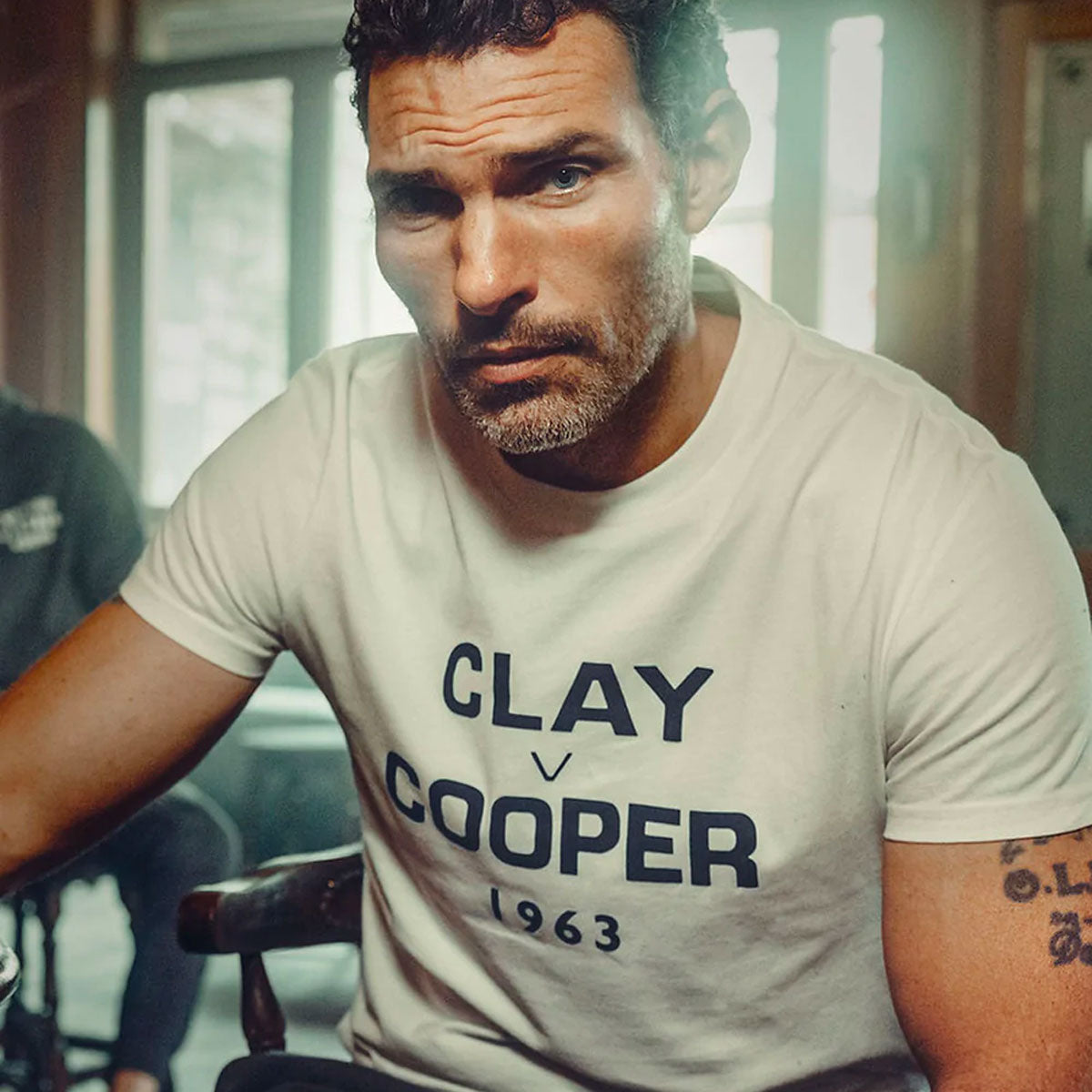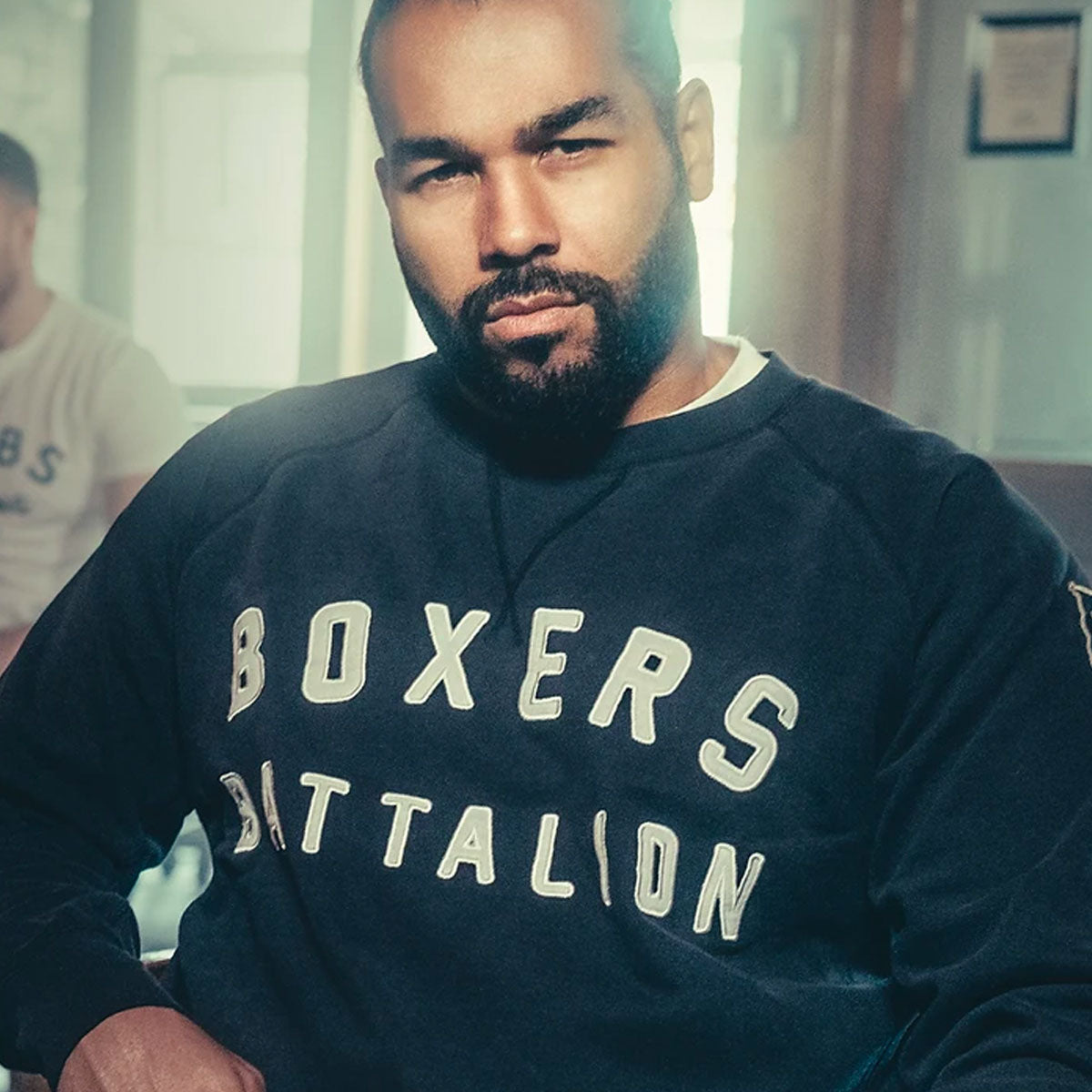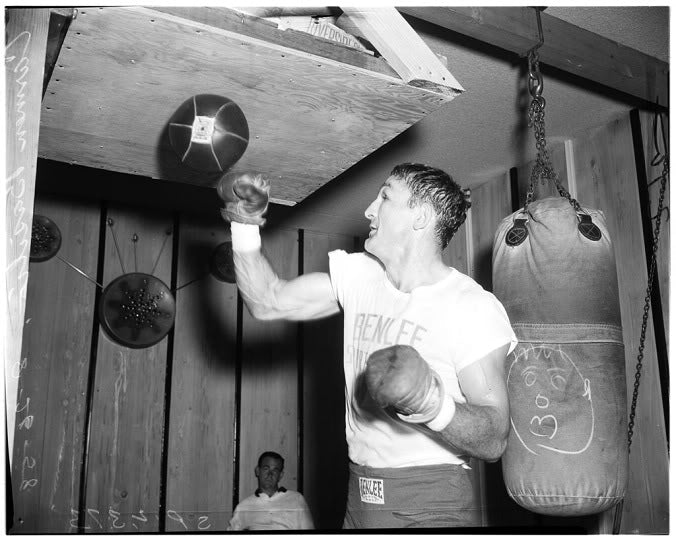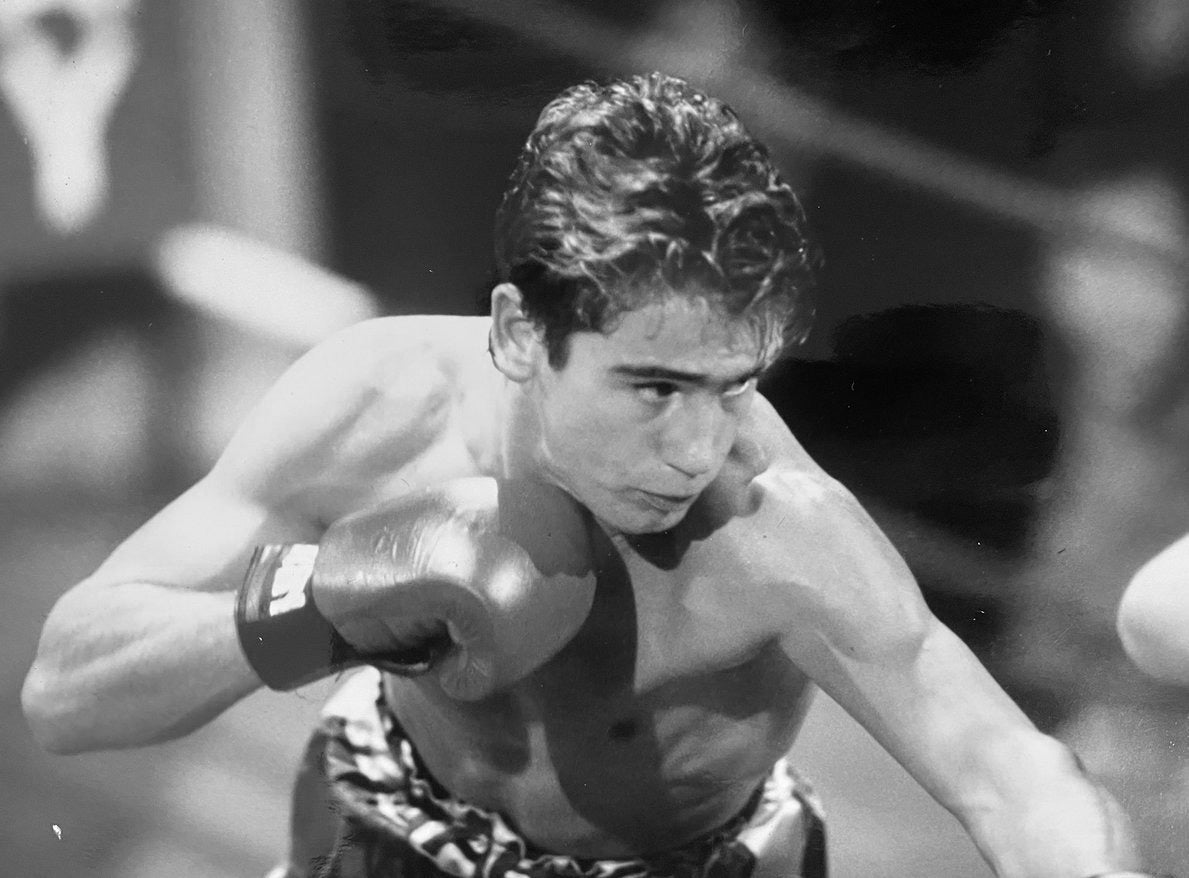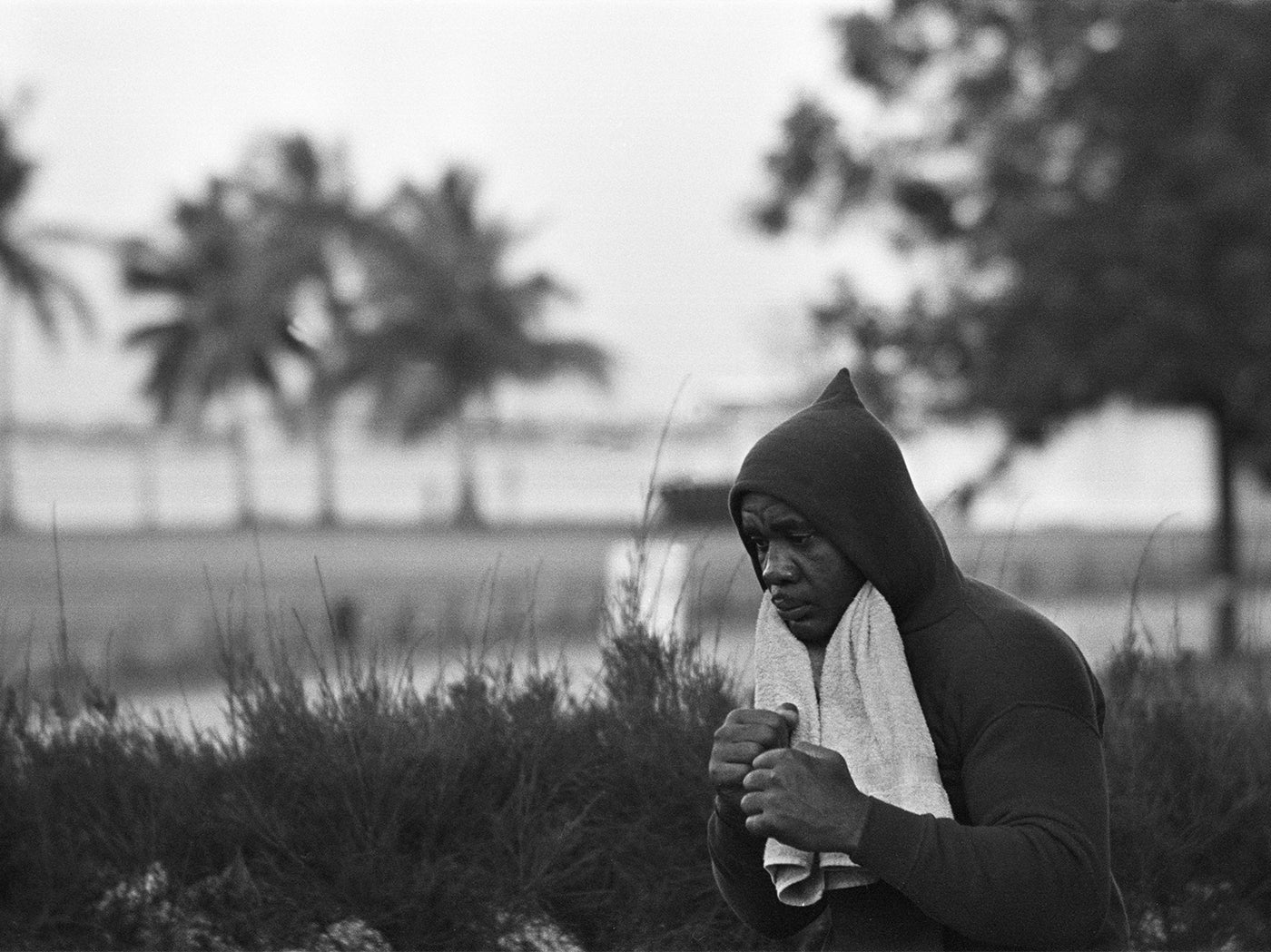By Paul Zanon
‘I can’t concentrate on golf or bowling. Those bowling pins aren’t going to hurt me. I can concentrate in the ring because someone is trying to kill me.’
Carmen Basilio
Records tell you that Carmen Basilio won 56 of his 79 professional bouts. However, like his onion moniker, there were many layers to the New Yorker who took on some all-time greats and became a two-weight world champion.
Born on 2 April 1927 in Canastota, upstate New York, Basilio grew up on an onion farm and was born into a family of boxing lovers. His father, an avid fight fan, bought him and his nine siblings boxing gloves and within no time young Carmen earned his spot on the high school boxing team. In an interview with Dave Lamele, Basilio said, ‘That’s the only reason I went to high school, because they had that boxing team. Without that I wouldn’t have gone.’ After school he joined the Marine Corp, then on 22 November 1947 he was honourably discharged from the military and boxed as an amateur for a year, before turning professional.

Basilio made his pro debut on 24 November 1948, knocking out 40 fight veteran, Jimmy Evans in three rounds at the Kalurah Temple, Binghampton, New York. Five days later he knocked out Bruce Walters in the opening stanza and within his first 12 months as a pro had a record of 15 wins, two losses, one of which he instantly avenged, and two debatable draws.
Basilio started 1950 in impressive form, racking up three wins in three months, including a majority decision against former world lightweight champion, Len Jenkins, in what was Basilio’s first 10 round contest. However, in the following two and half years, in his next 19 fights you certainly wouldn’t have believed this was a man who was going to leave a massive stamp on the boxing world. Basilio won nine, lost eight and drew two against mediocre competition. His record now stood at 28-10-4 which either signified the mapping of a journeyman’s career, or the start of a Cinderella Man style turnaround.
Thankfully, in 1953 Basilio shifted up a few gears. His first fight of the year was against long reigning former lightweight champion, Ike Williams. Despite a rocky road in the previous couple of years, Basilio won a very wide points decision over 10 rounds at the War Memorial Auditorium, Syracuse.
Three fights later, on 6 June 1953, Basilio fought Billy Graham. The pair had already fought 10 months prior, with Graham walking away with a points decision. This time round, Graham with a record of 100-10-9 was odds on favourite to become the USA New York State welterweight champion, but Basilio had other plans, grinding out a close points victory. Only seven weeks later they provided the third instalment, with both fighters leaving it all in the ring. Justifiably, the result was a split decision draw.
Keen to gain traction from his newly gained title, two months later, on 18 September 1953, Basilio took on one of Cuba’s very finest, Kid Gavilan, for the world welterweight title. Despite knocking Gavilan down for a nine count in the second round (the second time the Havana resident had ever hit the canvas in over 110 fights), Gavilan regained his momentum from the second half of the fight and started to outbox Basilio. Far from a landslide win for the Cuban, but he did enough to walk away with a split decision over 15 rounds. The result and performance was like an announcement to the world that Carmen Basilio was the real deal and coming for world titles. However, he also became an avoided fighter and while he was a fixture as ‘No1 Welterweight Contender,’ his next title shot didn’t happen for almost two years. 
In his next three fights he won one and drew two by split decision. Eager to put the record straight, he instantly rematched the two draws against Italo Scortichini and Pierre Langlois, beating them both in the space of four weeks. This was the start of a 12 fight winning streak and one which would prove to be legacy defining for the onion farmer.
On 10 June 1955 Basilio took on newly crowned middleweight champion, Leonardo Liotta, more commonly known as Tony DeMarco. The ‘Boston Bomber’ had only lost five in 52 fights and had dethroned Connecticut champion, Johnny Saxton with a 14th round stoppage two months prior. This was certainly a tough and legitimate test for Basilio.
Fighting in front of a home in Syracuse, Basilio stopped DeMarco at one minute and 52 seconds of the 12th round. He was now the world welterweight champion. That night he had none other than legendary trainer, Angelo Dundee in his corner. However, Dundee was there only in the capacity of cornerman. Basilio prided himself on being a self-trained fighter.
Despite a more testing rematch five months later, which saw DeMarco successfully landing some vicious trademark left hooks in the mid rounds, Basilio floored him twice in the 12th and then stopped him at one minute and 54 seconds of the round, precisely two seconds later than the previous fight. This became The Ring Magazine’s ‘Fight of The Year’ for 1955.
Four months later Basilio took on DeMarco’s former adversary, Johnny Saxton on 14 March 1956 at the Chicago Stadium. Saxton was managed by notorious mob boss, Blinky Palermo, in a fight surrounded by controversy. Saxton’s glove was split open early in the fight, believed to have been done intentionally by his corner, which they then took about 20 minutes to replace the glove. When the fight resumed, Basilio put an almighty beating on Saxton, but the New Jersey resident hung in there. Incredibly, Saxton was awarded a unanimous points decision. Thankfully, six months later, revenge was sweet, as Basilio smashed Saxton in nine rounds and regained his world title. Once again, this became The Ring Magazine’s ‘Fight of The Year.’
Saxton attempted to regain his title on 22 February 1957, but was annihilated in two rounds. By now, Basilio had outgrown the 147lbs division and made the decision to move up to middleweight. After a tune up fight against Harold Jones at 150lbs, on 23 September 1957 he challenged the reigning middleweight champion, Walker Smith Jr, better known as Sugar Ray Robinson.
At the time, Basilio had amassed 51 victories, however, he also had 12 losses and seven draws to his name. Robinson on the other hand boasted 141 wins, five losses and two draws. Basilio was the heavy underdog and was almost five inches shorter, however, there was a burning hate from Basilio which he yearned to unleash on Robinson, which fuelled the Rochester resident. Four years prior, after beating Billy Graham for the USA New York State welterweight title, Basilio spotted Robinson walking down Broadway and decided to go over to him and his entourage to shake his hand. He had no intention of trash talking with Sugar Ray, it was purely a gesture of respect from an up and coming fighter. Basilio said, ‘He gave me a brush off and I lost my respect for him right then and there.’ As the old expression goes, ‘Don’t look down on those who look up to you.’
When the pair met, Basilio fought a very aggressive fight and hunted the champion relentlessly for the full 15 rounds, unleashing hell on him. At the end of 15 hard fought rounds, Basilio was now a two weight world champion, walking away with a split decision victory. Once again, the contest was The Ring Magazine’s ‘Fight of the Year.’ Six months later on 25 March 1958, the pair locked horns again. Despite Basilio’s left eye being grotesquely closed for most of the fight, to the majority of onlookers, including the media, thought he had done enough to gain the decision. The judges saw it the other way and awarded Robinson a split decision victory, to the disgust of the crowd. Once again (!), their contest was The Ring Magazine’s ‘Fight of the Year.’
Basilio vs Robinson 2
Unfortunately, Basilio was unable to regain the title after the Robinson clash. Basilio suffered two back to back knockout losses in 1959 and 1960 to Gene Fullmer, with the first contest gaining Basilio his fifth Ring Magazine ‘Fight of The Year’ encounter. His swansong was against Paul Pender on 22 April 1961, where he lost a wide points decision challenging for Pender’s world middleweight title. His record finished with 56 wins, 17 losses and seven draws.
Basilio’s courage extended beyond the ring. From battling Blinky Palermo’s opponents and declining offers from the mob, in retirement Basilio stood as a witness against Frankie Carbo in the 1960’s, helping to secure a 25 year conviction against the mob boss, on a number of counts, including fight fixing.
Basilio stayed involved in the game for a number of years in various guises, including being a second for his nephew, world welterweight champion Billy Backus. Both Basilio and Backus were born in Canastota, so there’s a certain poetic justice when Basilio was inducted into the International Boxing Hall of Fame (IBHOF) in 1990. Backus is yet to be inducted, however, there’s a lovely story linking the Hall of Fame to both fighters. Below is an excerpt from Ed Brophy, Executive Director IBHOF. ‘The idea for a boxing hall of fame germinated out of a town’s love for two of its hometown boys who became world champions. In 1982 residents of Canastota, NY decided to honor former welterweight and middleweight champion of the late 1950s, Carmen Basilio and his nephew, Billy Backus, who won the world welterweight title in 1970. The townspeople raised funds for a showcase that would celebrate the achievements of their two local heroes.
‘The success and enthusiasm for that project encouraged Canastonians to explore the possibility of establishing boxing’s first hall of fame and museum. That project was completed in 1989, when two dozen former champions witnessed the ribbon cutting ceremony of the International Boxing Hall of Fame.’ Shortly after his induction in 1990, Basilio underwent a quadruple heart bypass, but still lived until the ripe age of 85, passing away in the early hours of 7 November 2012 from pneumonia in Rochester.
The New Yorker who stood a touch under 5ft 7inches, was involved in The Ring Magazine ‘Fights of The Year’ from 1955 – 1959. That’s five years on the bounce. A feat unmatched by any fighter and a tall order for any future fighter to match or surpass. His relentless attacking style, twinned with an iron chin rightfully earned him his place in history as possibly Canastota’s most famous fighting son. 
Paul Zanon, has had 11 books published, with almost all of them reaching the No1 Bestselling spot in their respective categories on Amazon. He has co-hosted boxing shows on Talk Sport, been a pundit on London Live, Boxnation and has contributed to a number of boxing publications, including, Boxing Monthly, The Ring, Daily Sport, Boxing News, Boxing Social, amongst other publications.

